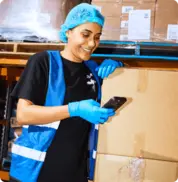With the advent of AI-powered prompt-engineering – ‘vibe coding’ – the barriers to platform building have not just been knocked down, they’ve been obliterated entirely.
It’s no understatement to say a digital revolution is underway. The latest wave of AI tools, now available to the general public, bring the ability for anyone – not just engineers – to ideate and build technology that can solve problems in today’s workplace. Thanks to a wave of AI-native tools like Cursor, Lovable, and GitHub Copilot, anyone who can articulate a workflow in plain English can now build it, or more specifically, ‘vibe it’ into being.
It is widely believed that computer scientist and AI thought leader Andrej Karpathy first coined the term, with vibe coding being less about syntax and more about creative expression. It’s the art of turning intent into functionality. Describe what you want, “a lead gen dashboard,” “a Slack alert when a KPI drops,” or “a job application tracker” and vibe coding platforms can help you build it.
The result? Software creation has been radically democratised, empowering teams across the workplace to build, iterate, and launch solutions faster than ever before. While complex programming may still be out of reach for some, everyday problems can now be solved without relying on specialist development resources. Teams become more agile, workflows more efficient, and innovation more evenly distributed across the organisation.
The knock on effect is that our school education system is set for an overhaul putting software building on the cards for kids who wouldn’t have traditionally gone down the technical programming route. In The Digital Landscapes in Australian Schools 2025 report, 78.2 per cent of survey respondents report active use of AI education tools, a huge leap given that AI was sparingly mentioned in the 2023 study.
A Billion-Dollar Trend
Vibe coding isn’t a niche hobby, it represents a fundamental market shift. Cursor, once a tool for engineers, is now used crossfunctionally in thousands of programming teams, hitting a $9.9 billion valuation in early 2025. Lovable, which went from $0-$10m annual recurring revenue in 60 days with just 15 people, focused on non-technical builders. It’s reportedly raising $100m with a $1.5 billion valuation and two-thirds of its users reportedly having absolutely no coding background. None.
What does that mean for business? “It’s a revolution in software creation,” according to Reuters. For employees it means unrivalled efficiency and potential for multiplier productivity and, for job seekers, it’s something even bigger: a new edge.
From Backlogs to Builders
Historically, non-technical teams, like HR, marketing and operations had to submit requests to the product or engineering department and wait weeks (or months) for a solution to their problems. Now, they’re building what they need themselves. And they are largely not being upskilled to do so, they are working it out with technology.
As Cursor CEO, Amjad Masad said on a recent episode of the Lex Fridman Podcast: “The future of programming is describing what you want, and letting the machine handle the syntax.” This isn’t hypothetical either, Google says more than 30 per cent of its new code is AI-generated. OpenAI’s strategy is now to equip every employee with a copilot no matter their role or experience with code.
Vibe Coding Goes Cross-Functional
For students and those early on in their career, vibe code software will become instrumental in the workplace. Open AI CEO, Sam Altman, recently said that students should focus on getting “really good at using AI tools.” AI is already automating over 50 per cent of coding at some companies, he told American analyst Ben Thompson of Stratechery as quoted in Business Insider, going on to say that students should prioritise the “meta ability to learn” over learning specific things.
When it comes to those already in their career, AI tooling offers a way to get ahead, stand out and futureproof their role against those who choose not to upskill. “Today, the most successful candidates I see are the ones who aren’t just aware of AI, they’re actively experimenting with it,” says Kate Jolly, Global Head of Talent at Employment Hero. “This means they’re using it to work smarter, express themselves better, and prove their agility in a fast-changing hiring market.”
Jolly says AI tooling and skillsets like vibe coding are no longer confined to technical teams. It’s a skill that transforms how entire organisations operate, from onboarding flows in HR to campaign dashboards in marketing.
Education platform Udemy, which offers courses across in-demand skills, says it’s seeing a huge growing global demand for courses in emerging skills related to AI among it’s 11 million learners. “Vibe coding is reshaping how people learn and work,” says Peter Kokkinos, Vice President of and Managing Director Asia Pacific at Udemy. “This trend is part of a broader global shift toward AI fluency where AI skills are embedded into onboarding, upskilling, and leadership programs. These courses provide practical, up-to-date training that helps learners develop the technical fluency, adaptability, and digital confidence necessary in today’s rapidly evolving job landscape.”
Vibe Coding as a Hiring Superpower
For those looking to build vibe coding fluency independently, the toolbox is already here and readily accessible. There are multiple platforms that offer AI-native code editors that turn natural language into real, working software. Lovable enables non-technical users to build workflows by simply describing their intent, while GitHub Copilot acts as a powerful autocomplete engine for writing code across a range of languages and tasks.
Even productivity platforms like Notion, Airtable, and Zapier are rolling out AI features that allow users to construct automated systems without writing traditional code. Whether you’re creating a Slack alert or building an onboarding tracker for HR, each tool doubles as a learning experience providing real-time feedback, suggestions, and an immediate sense of progress.
This shift isn’t about replacement, but reinvention. As John Naughton of The Guardian notes, tools like software co-pilots aren’t making developers obsolete, but are changing how they work. Vibe Coding is unlikely to remove the need for programmers but as tech commentator Tim O’Reilly puts it, “it will transform their jobs.”
The same will likely hold true for many skilled roles across industries, regardless of language or location. The AI transformation is already here, and these tools are here to stay.


























